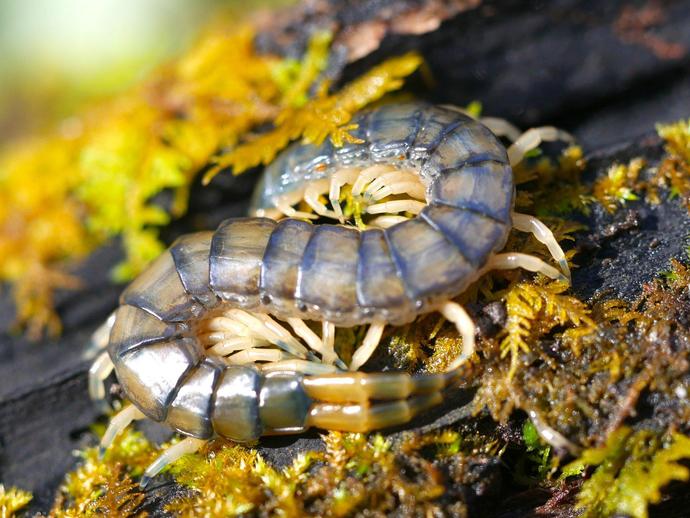April 6, 2021
It's time for the Tuesday edition of #BenInNature presented by our friends at Carter Bank & Trust!
I'll admit, centipedes tend to fall on the "nightmare-inducing" end of the arthropod spectrum. Between their many legs, their ability to move like the wind, and their painful bites, centipedes are best appreciated from a safe distance. However, with the right kind of eyes, they can be quite beautiful; case in point, Hemiscolopendra marginata, the Eastern bark centipede!
Topping out at around three inches in length, the Eastern bark centipede is one of Virginia's largest centipedes, and its bluish coloration is quite striking!
Most centipedes are predators, and while a bite from an Eastern bark centipede shouldn't cause medical issues, it can be quite painful. However, the term "bite" is probably inaccurate. If you look at the second photo which shows a close-up of the centipede's head, you'll notice that positioned beneath the head are two orange-ish projections. These are known as "forcipules," and they aren't mandibles and they aren't exactly stingers. Instead, they're a pair of modified legs! When centipedes hunt, they use their forcipules to pierce their prey and inject venom.
Interestingly, this venom appears to be pretty uniform across all species of centipedes, which means the severity of a bite is largely based on how much venom is injected. That means that the larger the centipede, the more painful the bite! Of course, we don't have any of the big species here in Virginia (although if you're ever in the southwest, keep an eye peeled for Scolopendra heros, the giant desert centipede -- I once watched a video of a guy intentionally letting one bite him and you could practically see his soul leave his body).
Having said all that, the only thing the Eastern bark centipede really wants to do is hang out under a rotting log and eat small insects and arthropods. They're shy and easily startled, and if you happen to see one, it will probably scurry away before you can get a second glance.
Thank you to VMNH Myriapodologist Dr. Jackson Means for spotting and identifying this guy!
ABOUT #BenInNature
Social distancing can be difficult, but it presents a great opportunity to become reacquainted with nature. In this series of posts, Administrator of Science Ben Williams ventures outdoors to record a snapshot of the unique sights that can be found in the natural world. New updates are posted Monday - Friday, with previous posts highlighted on the weekends. This series of posts is made possible thanks to the support of VMNH Corporate Partner Carter Bank & Trust (www.cbtcares.com)
NATURE PHOTO IDENTIFICATIONS
If you discover something in nature that you would like help identifying, be sure to message us right here on Facebook with a picture (please include location and date of picture) and we'll have our experts help you identify it!

 Hours & Admissions
Hours & Admissions Directions
Directions

